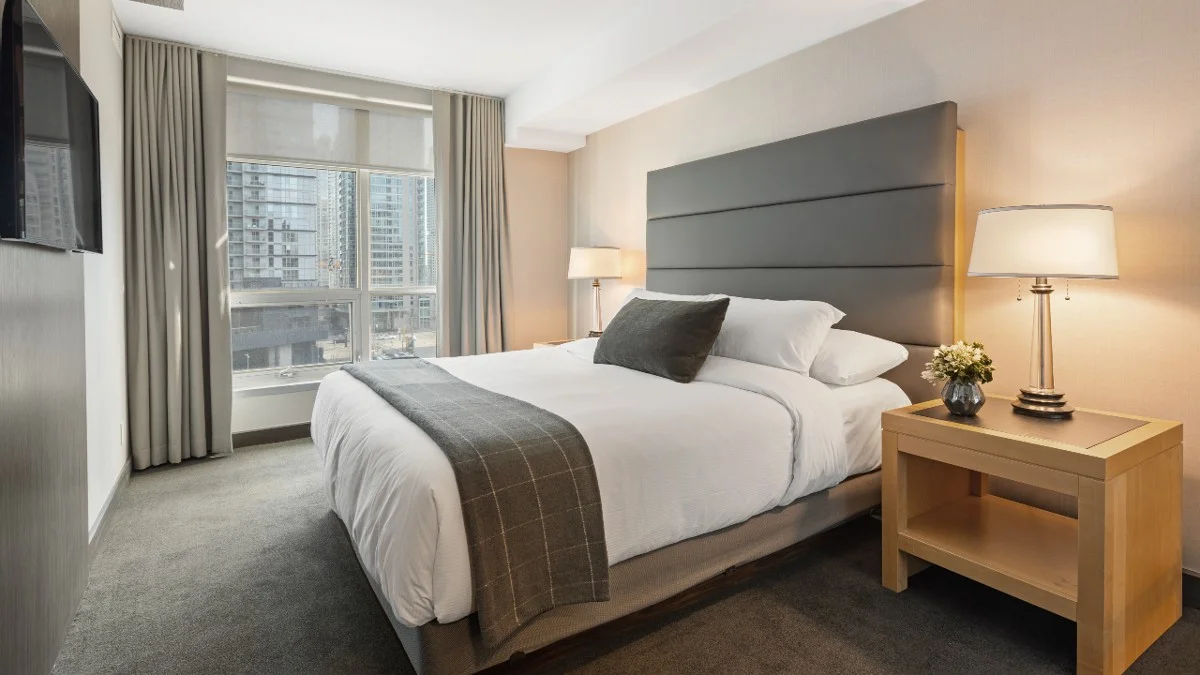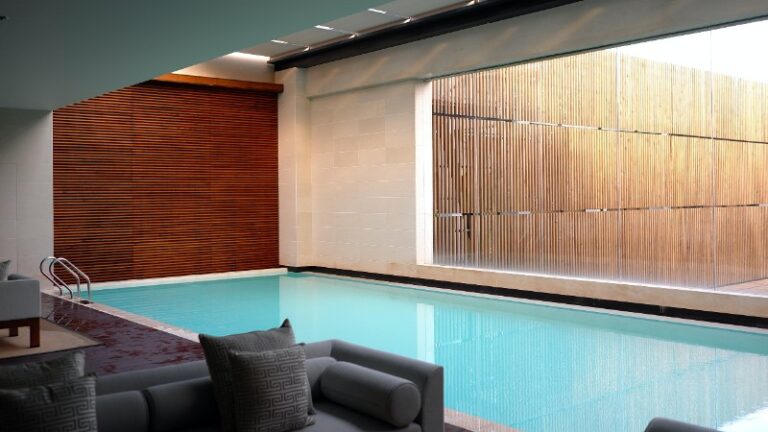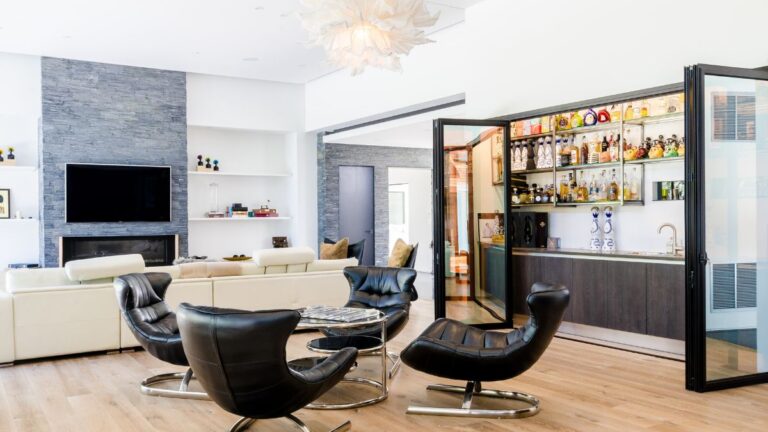Hotel Room Size Unraveled: Finding the Perfect Space for Your Comfort and Convenience

As participants in Amazon Associates and other programs, we earn from qualifying purchases. This comes at no additional cost to you. For more details, see our Affiliate Disclosure.
When it comes to booking a hotel room, size matters. A room that’s too small can feel cramped and uncomfortable, while a room that’s too large can feel empty and impersonal. Finding the perfect balance between comfort and convenience is key to ensuring a pleasant stay.
In this article, we’ll explore the different factors to consider when choosing a hotel room size, the types of hotel rooms available, and how to maximize your comfort and convenience during your stay. Whether you’re traveling for business or pleasure, this guide will help you find the perfect space for your needs.
Introduction to Hotel Room Sizes
Choosing the perfect hotel room is an art that combines various factors to create a truly comfortable and convenient travel experience. One critical element that often falls under the radar is the hotel room’s size. It’s a feature that can significantly impact your stay, especially in terms of comfort, functionality, and overall satisfaction. Despite its importance, understanding hotel room sizes can often be a bewildering task for travelers due to the wide variety of global standards and definitions.
We will tackle this ambiguity head-on, providing an in-depth look into the hotel room dimensions. We will explore the standards for room sizes across various types of accommodations, from quaint boutique hotels to expansive luxury resorts.
We will guide you through the nuances of hotel room sizes and layout designs, aiming to empower you with the knowledge you need to select the perfect space for your needs and preferences.
To make it even more user-friendly, we have encapsulated key information into a table, providing an at-a-glance comparison of the typical room sizes across different hotel categories.
| Hotel Category | Average Room Size (Square Feet) |
|---|---|
| Budget Hotels | 120-250 sq ft |
| Mid-range Hotels | 250-350 sq ft |
| Luxury Hotels | 350-500 sq ft |
| Boutique Hotels | 200-300 sq ft |
| Extended Stay Hotels | 300-400 sq ft |
| Suites in Luxury Hotels | 500-1500 sq ft |
| Presidential/VIP Suites | 1000-4000+ sq ft |
Please note that the above values are approximate averages and may vary significantly depending on the location, the specific hotel, and the room’s layout and design.
The Illusion of Space: How Room Design Impacts Perception
A critical aspect often overlooked when considering hotel room sizes is the role of design in shaping our perception of space. It’s not just about raw square footage; how a room is designed and furnished can dramatically alter our perception of its size. This is the art and science of spatial illusion – how design elements can be strategically manipulated to create a sense of spaciousness, even within a limited area.
The layout of a room, including the placement of furniture, lighting, and even the choice of colors, can make a room feel more spacious or intimate. For instance, light colors, especially on walls and floors, can make a room feel larger and brighter. Mirrors can also add depth to a room, creating an illusion of more space. Moreover, furniture that doubles as storage, such as beds with drawers underneath or ottomans with storage inside, can declutter a room and enhance the feeling of spaciousness.
The height and type of ceilings also play a crucial role. High ceilings can make a room feel larger and more luxurious, while exposed beams can add a touch of coziness without making the room feel confined. In addition, the arrangement and size of windows can impact how spacious a room feels. Large windows, or even floor-to-ceiling glass, allow more natural light in and provide broader views, making a room feel larger.
Smart design can also mean utilizing multi-purpose furniture or movable partitions, which allow guests to modify the room’s layout according to their needs. This flexible design can maximize space usage, providing the illusion of a larger area.
Factors to Consider When Choosing a Hotel Room Size
Selecting the right hotel room size is not as straightforward as it may seem. More often than not, it involves careful consideration of multiple factors. Here are some crucial aspects you should bear in mind:
- Number of Occupants: One of the first things to consider is the number of people staying in the room. A standard or even a compact room might suffice for a solo traveler. However, a larger room or suite would be more comfortable for couples or families.
- Duration of Stay: The length of your stay also influences your decision. A smaller room might be perfectly adequate if it’s a brief stopover. A bigger room with ample storage space would be more convenient for longer stays.
- Purpose of Visit: Are you in town for business or pleasure? Business travelers might need more workspace or a separate living area for meetings, while holiday-goers might prioritize a larger bathroom or a room with a view.
- Budget: Your budget is undeniably a significant determinant. While having a spacious room is nice, it’s essential to balance this with other factors, such as the hotel’s location, services, and amenities.
- Traveler’s Preferences: Some travelers may prefer a cozy, intimate space, while others might feel claustrophobic in anything less than a suite. Understand your preferences and comfort levels before booking.
- Amenities: Consider the amenities offered by the hotel. Sometimes, a smaller room in a hotel with a wide range of amenities like a pool, gym, or an excellent on-site restaurant might be a better choice than a larger room with fewer facilities.
- Location of the Room: The size of the room might also be affected by its location within the hotel. Rooms on higher floors or corner rooms might be larger or have better views, enhancing the perception of space.
The perfect hotel room size largely depends on your personal needs, preferences, and trip specifics. So, it’s wise to consider these factors holistically to ensure a comfortable and satisfying hotel stay.
Types of Hotel Rooms and Their Sizes
The hotel industry uses various terminologies to describe room types, which can often be confusing for travelers. Here’s a basic breakdown of common types of hotel rooms and their typical sizes:
- Single Room: Designed for one person, a single room contains a single bed and usually ranges from 120 to 150 square feet.
- Double Room: A double room is for two people and comes with either one double bed or two single beds. These rooms are generally larger than single rooms, usually between 180 and 250 square feet.
- Twin Room: Twin rooms are similar to double rooms, but they always feature two separate single beds. Their size is comparable to a double room, roughly 180 to 250 square feet.
- Triple Room: Suitable for three occupants, triple rooms contain either one double bed and one single bed, or three single beds. They are typically between 220 and 300 square feet.
- Quad Room: Quad rooms accommodate four people and may have various bed arrangements like two double beds or four single beds. They usually range from 275 to 350 square feet.
- Queen/King Room: These rooms are named after the size of the bed they contain. Queen rooms come with a queen-size bed and are slightly larger than standard double rooms, while King rooms are more spacious, featuring a king-size bed and ranging from 300 to 400 square feet.
- Suite: Suites are the most spacious, often containing a separate living area or even multiple bedrooms. The size of suites can vary drastically, from 400 square feet for a junior suite to over 1500 square feet for a presidential or royal suite.
- Studio: Studios are generally found in extended-stay hotels. They combine a bedroom, living room, and kitchenette into a single, open plan space, usually between 300 to 600 square feet.
- Connecting/Adjoining Rooms: These are standard rooms connected by a private internal door. They are great for families or groups traveling together and want privacy and connectivity at the same time.
here is a table showcasing the different types of hotel rooms and their typical sizes:
| Room Type | Typical Size (Square Feet) | Description |
|---|---|---|
| Single Room | 120-150 | Designed for one person, contains one single bed |
| Double Room | 180-250 | For two people, can contain one double bed or two single beds |
| Twin Room | 180-250 | For two people, contains two separate single beds |
| Triple Room | 220-300 | Suitable for three people, contains either one double and one single bed, or three single beds |
| Quad Room | 275-350 | Accommodates four people, may contain two double beds or four single beds |
| Queen/King Room | 300-400 | Named after the size of the bed they contain, more spacious than standard double rooms |
| Suite | 400-1500+ | Most spacious, often contains separate living area or multiple bedrooms |
| Studio | 300-600 | Combines bedroom, living room, and kitchenette into a single, open plan space |
| Connecting/Adjoining Rooms | Varies | Standard rooms connected by a private internal door, ideal for families or groups |
Please note that the room sizes are typical approximations and may vary significantly based on the hotel’s design, location, and category.
Suites vs. Standard Rooms: What’s the Real Difference?
When browsing hotel options, you’ve likely encountered terms such as “standard room” and “suite,” and you may be wondering what distinguishes one from the other. Let’s dissect these two categories to understand the real differences and which might better cater to your needs.
Size and Layout
The most obvious difference between suites and standard rooms is their size and layout. A standard room is typically a single room with a bed (or beds), a small sitting area, and a bathroom.
On the other hand, a suite is more expansive and usually includes at least one separate bedroom, a living area, and sometimes even a dining area or kitchenette. This additional space offers more room to relax, entertain, or work, which can be especially beneficial for longer stays or when traveling with family or colleagues.
Luxury Level and Amenities
Suites are often more luxurious than standard rooms. They’re usually equipped with premium amenities like high-end bath products, larger TVs, superior bedding, and sometimes even personalized services.
Some suites might feature additional conveniences like a private balcony, whirlpool tubs, or a full kitchen, depending on the hotel.
Price
Given their increased size and enhanced amenities, suites are typically more expensive than standard rooms. However, the extra cost might be justifiable if you’re seeking more comfort, traveling with a group, or planning an extended stay.
Purpose of Stay
The choice between a suite and a standard room often depends on the purpose of your stay. If you’re on a business trip and need space to work or conduct small meetings, a suite might be beneficial.
For a family vacation, a suite can offer a separate space for adults and children. On the other hand, if you’re a solo traveler or couple planning to spend most of your time exploring, a standard room might be all you need.
How to Maximize Comfort and Convenience in a Hotel Room
Regardless of your hotel room’s size, maximizing your comfort and convenience during your stay largely depends on some strategic choices and smart habits. Here are some ways to enhance your hotel experience:
- Choose the Right Room: If possible, choose a room based on your needs. If you’re a light sleeper, request a room away from elevators, staircases, or ice machines. If you need to work, ensure your room has a functional workspace.
- Unpack Properly: If you’re staying for more than a couple of nights, unpack your suitcase. Use the drawers, closet space, and hangers provided. It helps reduce clutter and makes you feel more at home.
- Adjust to Your Liking: Personalize the room temperature, lighting, and even furniture layout (if feasible) to suit your preferences. Also, don’t hesitate to request additional pillows, blankets, or towels if necessary.
- Maintain a Clean Space: Even though housekeeping services are usually available, keeping your room tidy can enhance your comfort. Make it a habit to clear any litter and organize your belongings daily.
- Make Use of Hotel Amenities: Hotels offer various amenities such as a gym, pool, spa, or even a business center. Make use of these to enhance your stay.
- Food and Beverages: If your room has a mini-fridge or coffee maker, use it to store snacks or prepare hot drinks. It can add to your comfort, especially during late-night cravings or early morning coffee needs.
- Utilize In-Room Technology: Many hotels now offer in-room technology like smart TVs, mobile controls for room settings, high-speed Wi-Fi, and even virtual assistants. Use these to streamline your stay and increase convenience.
- Communicate Your Needs: Never hesitate to communicate with the hotel staff if you have special requirements or if something isn’t working. They are there to assist and enhance your stay.
Tips for Finding the Perfect Hotel Room Size for Your Needs
Selecting the perfect hotel room size can greatly influence your travel experience. While everyone’s needs vary, here are some universal tips to help you find a room size that’s ideal for your needs:
- Understand Your Needs: The first step is to clearly understand your needs. Are you traveling alone, as a couple, or with family? How much time do you plan to spend in the room? Do you need space for work or relaxation? Answering these questions can guide your choice.
- Research Room Dimensions: When booking, go beyond the room’s name and look into the actual room dimensions. This information is usually listed on the hotel’s website, or you can contact the hotel directly for this information.
- Consider the Layout: Remember that a room’s layout can influence the perception of space. Look for pictures or descriptions of the room’s layout to see if it suits your needs.
- Check Reviews: Previous guests’ reviews can provide insights into how spacious or cramped a room feels. Look for comments on room size, storage space, and overall comfort.
- Think About Duration of Stay: If you’re planning a longer stay, opting for a larger room or suite can make your stay more comfortable. For a shorter stay, a standard room might suffice.
- Consider Your Budget: Bigger rooms generally come with a higher price tag. Balance your need for space with your travel budget.
- Value Add-ons: Sometimes, a smaller room in a hotel with excellent amenities could be a better choice than a larger room in a hotel with fewer facilities.
- Communicate with Hotel Staff: Don’t hesitate to communicate your needs to the hotel staff. They can provide valuable insights to help you choose the right room.
The perfect hotel room size is a balance between your personal comfort and practical needs. Considering these factors can help ensure you find a room that feels just right for you.






